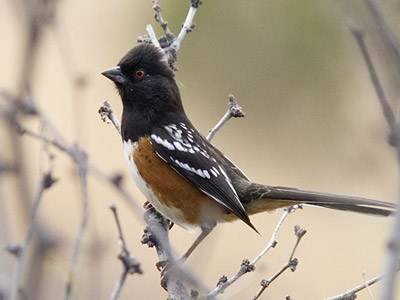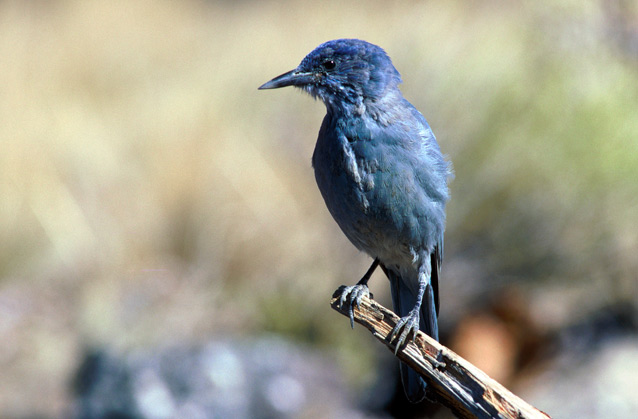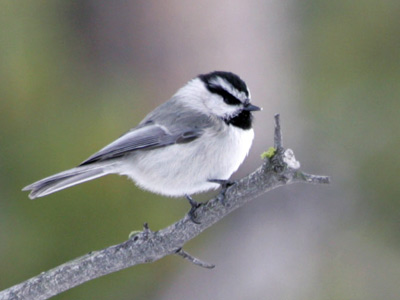Methods

© Robert Shantz
The New Mexico Natural Heritage Program conducted the first thorough breeding bird inventory in 2002. Habitats at Capulin Volcano National Monument (NM), in the northeast corner of New Mexico, include the cinder cone, covered with pinyon-juniper woodland; scrub oak and other shrubs; remnants of ponderosa pine forest; and over 200 acres of high plains short-grass prairie. Linear point counts with distance sampling were used to survey along transects in two different habitats (grassland and pinyon-juniper) in May and June 2002. Habitats targeted for survey outside of point counts included the residential area, visitor center, the crater rim, and within the crater itself. Points were at least 250 m apart and all birds detected by sight and/or sound during a five-minute survey period were recorded.
Status

Dave Menke / USFWS
The target list of species was created from the official Capulin Volcano NM bird checklist of 58 species. Since this list included species that had been observed at habitats outside the park boundaries, nine species were removed. Fourteen species were added because they were observed on the park bringing the target list to a total of 63 species. Fifty-six breeding bird species (88.9% of those on the target list) were documented during the inventory. Three additional species were observed during the 2002 breeding season, but are considered migrants. Grassland habitats accounted for 45.8% (27 species), pinyon-juniper habitats for 78.0% (46 species), and human-impacted areas for 25.4% (15 species) of all species observed. Twenty species used more than one habitat.

© Jim Peaco
The most frequently detected bird on point counts was the spotted towhee (Pipilo maculatus; 25.8% of detections) followed by the green-tailed towhee (Pipilo chlorurus; 11.7% of detections) and the chipping sparrow (Spizella passerina; 6.3% of detections). All three species were observed in both habitats sampled. The remaining 19 species (of those birds detected on point counts) each averaged less than 3.0% of detections. Some of the other birds observed at Capulin Volcano NM include the American kestrel (Falco sparverius), Northern flicker (Colaptes auratus), pinyon jay (Gymnorhinus cyanocephalus), violet-green swallow (Tachycineta thalassina), mountain chickadee (Poecile gambeli), and mountain bluebird (Sialia currucoides). The absence of typical pinyon-juniper species such as the juniper titmouse and canyon towhee is somewhat surprising. Repeated surveys may detect these species in low numbers.
The absence of livestock grazing on Capulin Volcano NM has apparently encouraged an increased diversity of grassland birds, especially ground- and shrub-nesting birds such as vesper sparrow (Pooecetes gramineus) and lark sparrow (Chondestes grammacus), but grassland encroachment by conifers may decrease the area available to grassland species. Management to clear these areas will help maintain grassland habitats should forest encroachment become severe.
Contacts
Kristine Johnson, Giancarlo Sadoi, Gabor Racz, Josh Butler, & Yvonne Chauvin, New Mexico Natural Heritage
Reference
Johnson K and Others. 2003. National Park Service Southern Plains Network Inventory Report for New Mexico Parks. Albuquerque, NM.
Prepared by the Southern Plains Network Inventory and Monitoring Program, 2015.
Part of a series of articles titled Southern Plains Bird Inventories.
Previous: Bent's Old Fort Bird Inventory
Last updated: February 1, 2017
